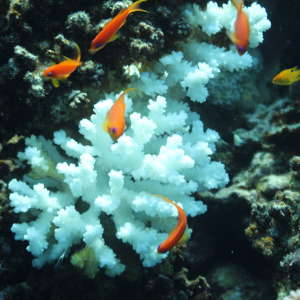The Missing Kingdom: Why Fungi Must Be Central to Conservation Strategy
28 December 2025
Published online 3 September 2020
Heat stress combined with an upwelling of nutrients from the sea floor triggered a massive Red Sea coral bleaching in 2015.

The scientists detected dense ‘stress bands’ after drilling into the skeletal cores of dead and living corals from the Farasan Banks. These bands, like tree rings, record periods of environmental stress, including bleaching.
They found that 81 per cent of the coral cores showed high density stress bands in 2015, whereas stress bands were found in less than 15 per cent of corals in 1982, 1995, and 2002. The disparity was surprising, as 2015 was not the warmest summer.
To understand the disparity, the researchers looked at other factors such as light stress and upwelling, a process that delivers deep, nutrient-rich cold water towards the surface. They found that light stress was not greater in 2015 than in other years. But an upwelling occurred in 2015 that was the fourth greatest in the area, only falling behind upwellings in 1982, 1983 and 1984, which weren’t accompanied by heat stress.
This means that the Red Sea waters in the region of the Farasan Banks were both moderately hot and nutrient-rich in 2015, whereas 2002 was hotter but nutrient-poor and 1982 was less hot but nutrient-rich. The researchers concluded that nutrients exacerbate bleaching response or perhaps lower the threshold temperature above which bleaching occurs.
The team plans to work with climate datasets and models of future climate to evaluate whether they can include these findings in coral bleaching forecasts.
doi:10.1038/nmiddleeast.2020.91
DeCarlo, T. M. et al. Nutrient-supplying ocean currents modulate coral bleaching susceptibility. Sci. Adv. 6, eabc5493 (2020).
Stay connected: